
Tabanus cordiger also known as the plain-eyed grey horsefly is a species of biting horse-fly.

Tabanus glaucopis, also known as the downland horsefly, is a species of biting horse-fly.
Tabanus spodopterus also known as the black horned giant horsefly is a species of biting horse-fly. It is widespread in Europe, but only one doubtful specimen has been found in the United Kingdom.
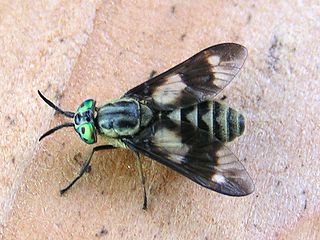
Chrysops relictus, the twin-lobed deerfly, is a largish European and Asian deerfly of about 8–10.5 millimetres (0.31–0.41 in) length, The larvae feed upon organic matter in damp soils, and are termed hydrobionts in that they inhabit areas of high water content.

Pangonius is a genus within the horse-fly family (Tabanidae), often misspelled as Pangonia; Latreille originally published the name as Pangonius in 1802, emending it in 1804 to Pangonia, but the emendation is not valid under the International Code of Zoological Nomenclature. Some species that were earlier placed in this genus are now in the genus Philoliche.

Philipomyia aprica is a species of horse fly of the family Tabanidae, subfamily Tabaninae.
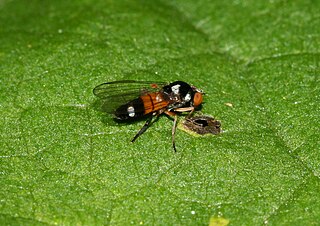
Callomyia is a genus of flies in the family Platypezidae. Some species can be found in Belgium.

Hybomitra aterrima is a species of horse flies in the family Tabanidae.

Philipomyia is a genus of horse fly belonging to the family Tabanidae subfamily Tabaninae.

Tabanus quatuornotatus is a species of biting horse-fly.
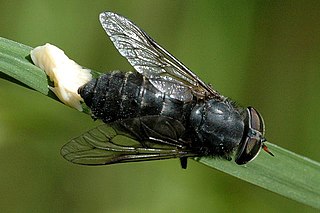
Hybomitra micans is a species of horse flies in the family Tabanidae.
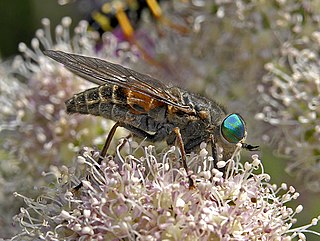
Hybomitra montana, the slender-horned horsefly, is a species of horse flies in the family Tabanidae.
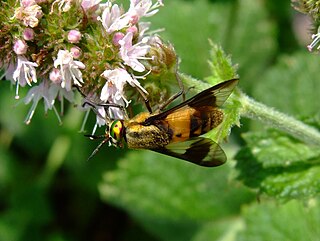
Chrysops viduatus is a species of 'horse flies' belonging to the family Tabanidae.
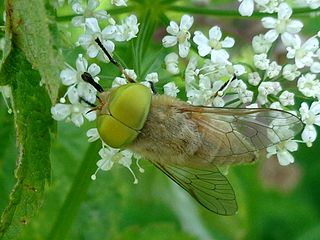
Atylotus is a genus of horse flies in the family Tabanidae.

Chrysopsinae is a subfamily of deer flies in the family Tabanidae.
Hybomitra solstitialis is a Palearctic species of horse fly in the family Tabanidae. Continental authorities apply the name solstitialis to the coastal species Hybomitra ciureai of British authorities and regard British solstitialis as var. collini of Hybomitra bimaculata.
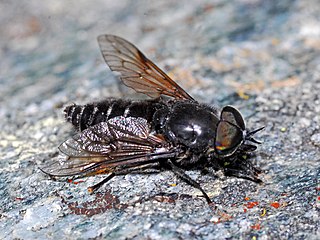
Dasyrhamphis umbrinus is a species of horse fly, a fly in the family Tabanidae, native to Europe and near East Asia.

Chrysopsini is a tribe of horse and deer flies in the family Tabanidae.
Hybomitra auripila is a Palearctic species of horse fly in the family Tabanidae.
Nemorius is a genus of horse flies in the family Tabanidae.
















